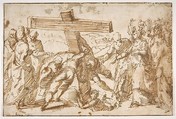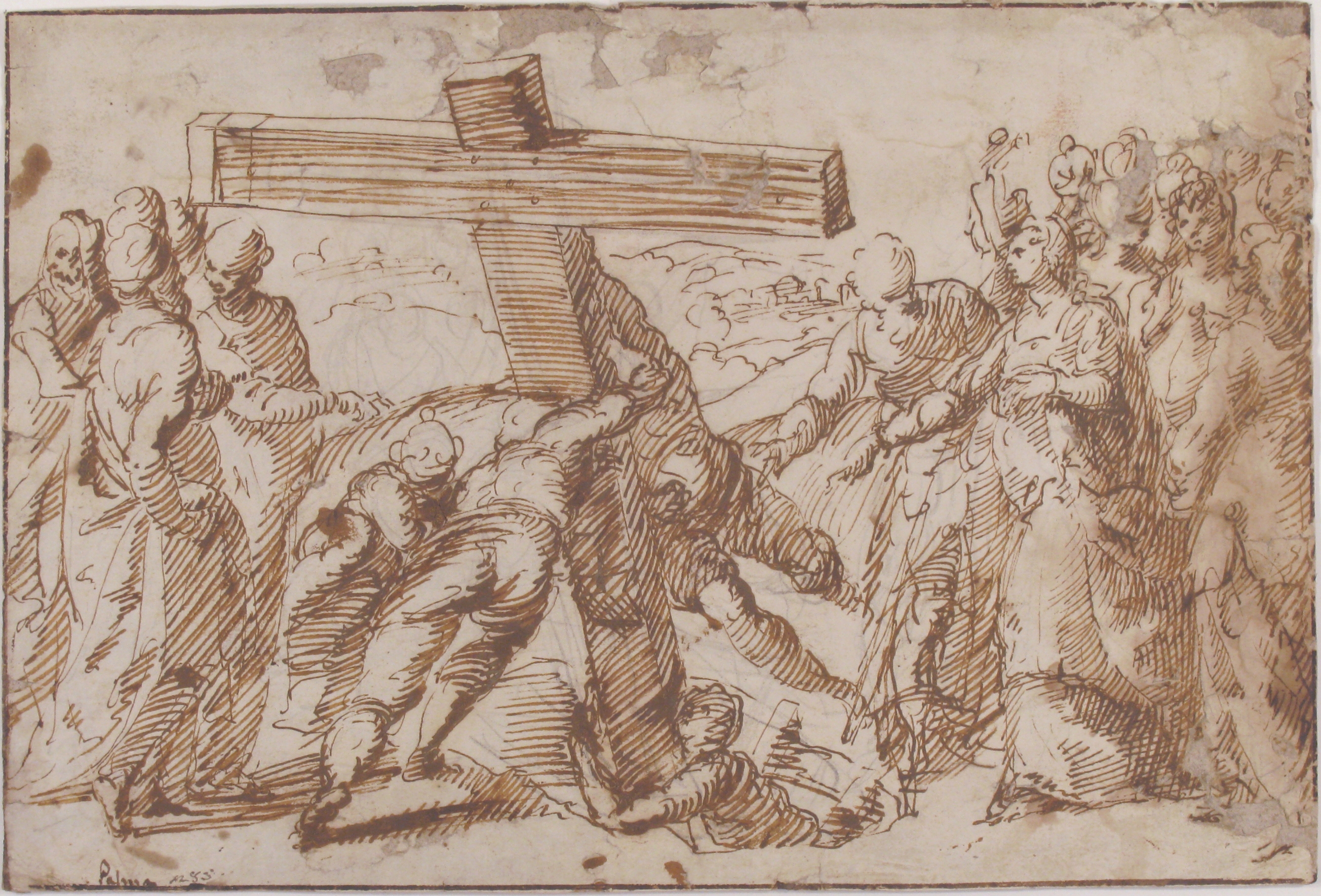The Discovery of the True Cross
Bernardo Strozzi Italian
Not on view
This drawing can be attributed with confidence to Bernardo Strozzi, who was, along with Giovanni Benedetto Castiglione (1609-1664), the greatest Genoese Baroque painter. The Museum owns an expressive study in black chalk by Strozzi, a "Saint Peter" in bust-length (1993.241), as well as the only print by the artist, a "Virgin and Child with St. John" (1972.693).
Pen and ink sketches by Strozzi are relatively rare. In this drawing, the rapid and bold summing up of forms as spheres, the mannered, downward-tilt of the heads of many figures, and the use of broad areas with long, parallel, slightly curved hatching, can be compared precisely to Strozzi's early "Children and Angels Dancing Around the Cross Held by the Christ Child" (Morgan Library and Museum, inv. 1981.101), a drawing that was exhibited at the Museum in 1996 in the show "Genoa: Drawings and Prints.". Further relevant sketches by Strozzi are in the Gabinetto dei Desegni of Palazzo Rosso, Genoa. The sheet appeared in the Christie's sale catalogue (London, July 7, 1998, lot 57), as by the circle of Jacopo d'Antonio Negretti ‘Palma Il Vecchio,’ (1480-1528) an attribution that cannot be supported with comparisons to known drawings or paintings by this artist. For the same reasons, his son Palma Il Giovane (1548-1628) can also be ruled out as author.
The veneration of the "Holy Cross" (alluded to by both this drawing and the early Morgan sheet) had particular meaning for the Franciscan order. In 1597, Bernardo Strozzi took vows as a Capuchin, the most ascetic branch of that order, but renounced this commitment in 1608/9. Although the early biography of Strozzi by Raffaele Soprani and Carlo Giuseppe Ratti (1798-69) focuses on the religious scandal in the artist's life, offering little concrete information on any of his artistic projects, it does mention that the young novice first expressed his artistic inclination by portraying Franciscan saints.
This spirited pen and ink sketch portrays the scene of St. Helena, in the foreground to the right, and her Roman followers unearthing the "Holy Cross." In the center, four male figures, in a dynamically foreshortened spiral arrangement, pull the enormous cross from the ground. Toward the lower left, the sheet is annotated in pen and brown ink by two different hands, "Palma" and "no.83." The 18th century paper backing is annotated by early hands in pen and brown ink on the upper left, "Palma Vec[chio]," and toward the center, "f 68."
(Carmen C. Bambach, 1998, revised 2015)
Due to rights restrictions, this image cannot be enlarged, viewed at full screen, or downloaded.
This artwork is meant to be viewed from right to left. Scroll left to view more.






